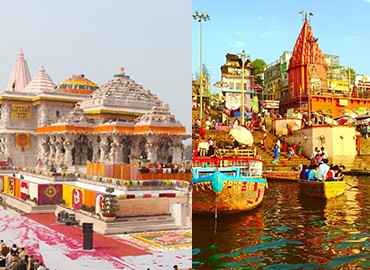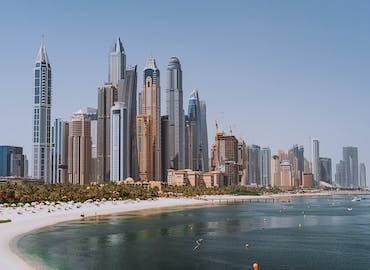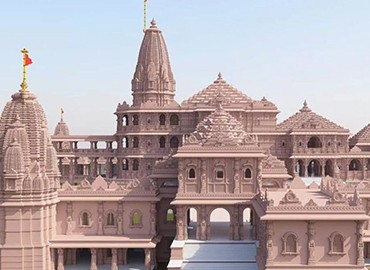CHAR DHAM YATRA
Overview
The high-altitude shrines remain shut for around six months every year, opening in summers (April or May) and closing with the onset of winter (October or November). It is believed that one should complete the Char Dham Yatra in a clockwise direction. Hence, the pilgrimage starts from Yamunotri, proceeds towards Gangotri, onto Kedarnath, and finally ends at Badrinath. The journey can be completed by road or by air (helicopter services are available). Some devotees even do a Do Dham Yatra or a pilgrimage to two shrines - Kedarnath and Badrinath.
Inclusions & Exclusions
Detailed Day Wise Itinerary
Day 1 : Haridwar - Barkot (176kms/7-8hr) / Dehradun Airport – Barkot (156kms/6-7hrs)
Pickup from Haridwar Railway Station / Dehradun Airport to Barkot via Mussoorie visit with Kempty Fall . Arrive Barkot, transfer to your Hotel. Overnight stay at Barkot.
Main Attractions :- Mussoorie & Kempty Fall
Weather - Generally pleasant in summer, the temperature ranges from 25-30 degree Celsius, Winter: The Days are pleasantly cool but the nights are cold,temp ranges from 10 deg to 05 deg.
Day 2 : Barkot - Yamunotri - Barkot (45kms/3-4hrs & 6kms Trek)
Early morning,Drive to Jankichatti/Phoolchatti, trek start from here to Yamunotri (6kms). Either by walk or by horse or by Doli at own cost. Arr. Yamunotri, One can cook rice by packing it in a cloth and dipping it in the hot water of the hot kund. Pilgrims take this cooked rice home as "Prasad". Here near the temple "Pooja" can be offered to Divya Shila, After taking bath in Jamunabai Kund's warm water and having "Darshan" of pious "Yamunaji" returning to Jankichatti. Return back to Barkot, Overnight stay.
Main Attractions
Yamunotri Temple: Maharani Gularia of Jaipur built the temple in the 19th Century. It was destroyed twice in the present century and rebuilt again.
Surya Kund: There are a Number of thermal springs in the vicinity of the temple, which flows into numerous pools. The most important of these is Surya Kund.
Divya Shila: A rock pillar, worshipped before entering the Yamunotri Temple.
Weather - In summer the maximun temp is 18 degrees and the minimum is 10 degrees celsius. The days are pleasantly cool but the nights are cold.
Day 3 : Barkot - Uttarkashi (82kms/4-5hrs)
Early Morning after breakfast drive to Uttarkashi . Uttarkashi is home to a number of ashrams and temples and also to the Nehru Institute of Mountaineering. The name of the town reflects its similarity to and location (as north of) the city of Kashi (Varanasi). Similar to Varanasi, town of Uttarkashi is situated on the Ganges, lies next to a hill named Varun Parvat, on confluence of two rivers Varuna and Asi, has a ghat called Manikarnika Ghat and has a temple dedicated to Shiva (Kashi Vishwanath Temple) in the center of the town.
Day 4 : Uttarkashi - Gangotri - Uttarkashi (100kms/4-5hours)
Early morning drive to Gangotri, enroute at Gangnani take a holy dip in Garam Kund, further drive to Gangotri via beautiful Harsil Valley. Harsil is famous for its nature beauty and for the majestic views of the Deodar trees, and mountains. On arrival at Shree Gangotri, take a holy dip in the sacred river Ganges which is also called Bhagirathi at its origin. Perform Pooja and Darshan, after that relax for some time in the lovely surroundings. Return back to Uttarkashi. Overnight stay at Uttarkashi.
Day 5 : Uttarkashi – Guptkashi (220kms/8-9hrs)
Drive straight to Guptkashi via Moolgarh & Lambgoan. Enroute you can see the beautiful river Mandakini at Tilwara. The Mandakini river comes from Kedarnath, drive alongside the river to reach Guptakashi. On arrival Check In at the Hotel, evening visit Ardh Narishwar Temple. Overnight stay at the Hotel.
The name Gupt Kashi means "Hidden Benares. Mythology describes how when the Pandava brothers were searching for a glimpse of Shiva, Shivji first concealed himself at Gupt Kashi, but later fled from them further up the valley to Kedarnath, where the Pandavas finally got their wish fulfilled. There are more tangible connections as well-the Kedarnath pandas (hereditary pilgrimage priests) live in Gupt Kashi during the winter months, and after the Kedarnath temple closes for the winter, the image of Kedarnath passes through Gupt Kashi on its way to Ukhimath (across the valley), where it stays for the winter.
Day 6 : Guptkashi/Phata/Sersi Helipad (10 15kms) or Sonprayag (16-18 kms Trekk) - Kedarnath
Morning drive to Phata (Helipad), transfer to Kedarnath by Helicopter or drop to Gaurikund/Sonprayag to go by walk. Visit Kedarnath Temple & return back to Phata or Gaurikund/Sonprayag. Later drive back to Guptkashi.
Main Attractions
Kedarnath: The Kedarnath shrine, one of the 12 jyotirlingas of Lord Shiva, is a scenic spot situated, against the backdrop of the majestic Kedarnath range. Kedar is another name of Lord Shiva, the protector and the destroyer. According to legend, the Pandavas after having won over the Kaurava in the Kurukshetra war, felt guilty of having killed their own brothers and sought the blessings of Lord Shiva for redemption. He eluded them repeatedly and while fleeing took refuge at Kedarnath in the form of a bull. On being followed he dived into the ground, leaving his hump on the surface. The r! emaining portions of Lord Shiva appeared at four other places and are worshipped there as his manifestations. The arms appeared at Tungnath, the face at Rudranath, the belly at Madhmaheshwar and his locks (hair) with head at Kalpeshwar. Kedarnath and the four above-mentioned shrines are treated as Panch Kedar.
Day 7 : Guptkashi – Badrinath (210kms/7-8hr)
Drive to Badrinath via Joshimath. Check in Hotel. Later at evening visit Badrinath Temple for Aarti. Badrinath one of the 'Four Dhams' is one of the most celebrated pilgrimage spots of the country and is situated at an elevation of 3,133 meters, guarded on either side by the two mountain ranges known as Nar & Narayan with the towering Neelkanth Peak providing a splendid backdrop. This revered spot was once carpeted with wild berries. Thus the place got the name "Badri van", meaning "forest of berries".
Main Atttractions :- Ukkimath, Chopta & Tungnath Temple (Optional)
Day 8 : Badrinath – Joshimath - Haridwar (160kms/7hr)
Early Morning, after breakfast finish these attractions below and drive to Rudraprayag Via Joshimath.
Day 9 : Rudraprayag – Rishikesh - Haridwar (160kms/5hr)
Drive to Rishikesh, the 'place of sages' is a celebrated spiritual town on the bank of Ganga and is surrounded by Shivalik range of the Himalayas on three sides. It is said that when Raibhya Rishi did hard penances, God appeared by the name of “Hrishikesh” and this area hence firth came to be known as Rishikesh
Term & Conditions

Trip Information
- Starting Price : ₹21500 Per Person
- Places Visits : Yumnotri - Gangotri - Kedarnath - Badrinath
- Duration: 8N/9D
- Flights: 0
- Hotels: 5
- Activity: 0
- Transport: 1





